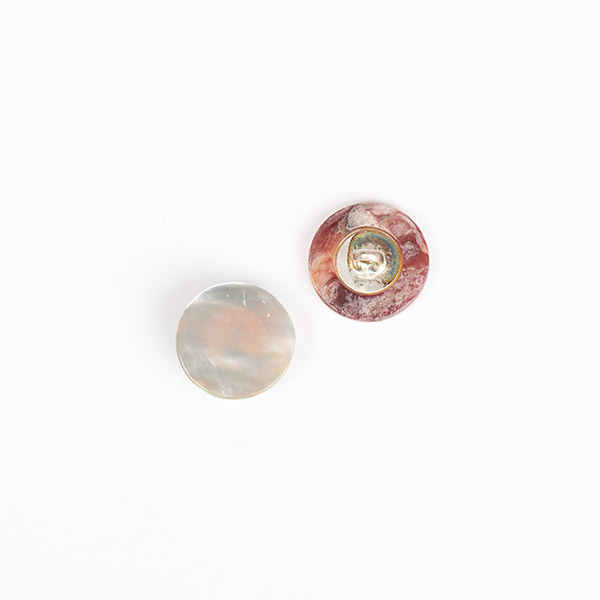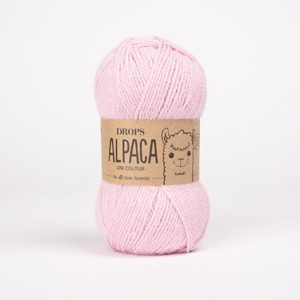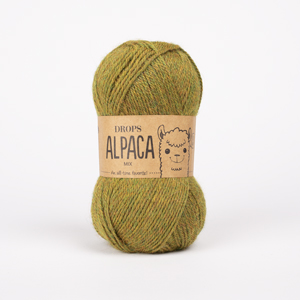Comments / Questions (18)
![]() Maria wrote:
Maria wrote:
Denna var ju otroligt söt!
05.04.2010 - 23:27
![]() DROPS Design NL wrote:
DROPS Design NL wrote:
U vindt de beschrijving onder "ALLE MATEN". "Ga nu verder in gesmokt patroon als volgt: " Succes. Gr. Tine
09.03.2010 - 12:25
![]() Annelie De Bruijn wrote:
Annelie De Bruijn wrote:
Ik zie bij dit patroon geen beschrijving van het smok patroon
09.03.2010 - 12:17Rosella wrote:
Je voudrai avoir les instructions en italien s'il vous plait
01.03.2010 - 16:15Josiane wrote:
Another gorgeous cardigan...
18.01.2010 - 04:10
![]() Wenche wrote:
Wenche wrote:
Så fort mønsteret på denne flotte jakken er lagt ut, da er jeg igang ;-)
17.01.2010 - 22:26Dominique wrote:
Plain but nice and elegant
10.01.2010 - 20:06
![]() Bea wrote:
Bea wrote:
Gillar starkt dessa modeller med runda ok. Bra med både knappar och utan så valmöjligheten finns.
29.12.2009 - 19:38
![]() Gitte Norlander wrote:
Gitte Norlander wrote:
Den er super fin.
27.12.2009 - 18:57
![]() Sanne Bak wrote:
Sanne Bak wrote:
Virkelig sød og feminin model. Dejlig farve.
20.12.2009 - 10:16
Odette Cardigan#odettecardigan |
|
 |
 |
DROPS Jacket in 2 threads ”Alpaca” with short sleeves and shirred pattern on yoke. Size S - XXXL
DROPS 119-8 |
|
|
GARTER ST (back and forth on needle): K all rows. BUTTONHOLES: Make buttonholes on right front band. 1 BUTTONHOLE = K tog 3rd and 4th st from mid front and make 1 YO. Make buttonholes when piece measures: SIZE S: 19, 25, 31, 37, 43, 49 and 55 cm. SIZE M: 19, 25, 31, 38, 44, 51 and 57 cm. SIZE L: 19, 26, 33, 40, 46, 53 and 59 cm. SIZE XL: 19, 25, 31, 37, 43, 49, 55 and 61 cm. SIZE XXL: 19, 26, 32, 38, 44, 50, 57 and 63 cm. SIZE XXXL: 19, 26, 33, 39, 46, 52, 59 and 65 cm. DECREASING TIP-1 (applies to body piece): Make all dec from RS. Dec as follows BEFORE marker: K2 tog. Dec as follows AFTER marker: slip 1 st as if to K, K1, psso. DECREASING TIP-2 (applies to armhole): Make all dec from RS inside 3 garter sts. Dec as follows BEFORE 3 sts: K2 tog. Dec as follows AFTER 3 sts: slip 1 st as if to K, K1, psso. -------------------------------------------------------- -------------------------------------------------------- BODY PIECE: Worked back and forth on circular needle. Cast on 152-166-180-198-214-230 sts (includes 5 front band sts each side towards mid front) on circular needle size 4 mm with 2 threads Alpaca. Work 6 rows GARTER ST – see above! Insert a marker 40-44-47-52-56-60 sts in from each side (= 72-78-86-94-102-110 sts between markers on back piece). Change to circular needle size 5 mm and continue in stocking st with front bands in garter st. REMEMBER THE KNITTING TENSION! When piece measures 5 cm dec 1 st each side of both markers – see DECREASING TIP-1, and repeat the dec on every 2.5 cm a total of 6 times = 128-142-156-174-190-206 sts. When piece measures 19 cm make BUTTONHOLES - see above! When piece measures 22-23-24-25-26-27 cm inc 1 st each side of both markers by K2 in 1 st from RS, and repeat the inc on every 2 cm a total of 5 times = 148-162-176-194-210-226 sts. When piece measures approx 35-36-37-38-39-40 cm (adjust so that next row is from WS) work 2 rows garter st on 12-12-14-14-16-16 sts each side (= 6-6-7-7-8-8 sts each side of marker) with remaining sts as before. On next row cast off the middle 6-6-8-8-10-10 sts each side for armhole – cast off in K sts from WS. Continue as follows: SIZE S: Work next row as follows from RS: K 36 sts (= right front piece), LOOSELY cast on 40 new sts (= sleeve), K 64 sts (= back piece), LOOSELY cast on 40 new sts (= sleeve) and K 36 sts (= left front piece) = a total of 216 sts. SIZE M: Right front piece = 40 sts. K 1 row from RS, at the same time dec 1 st towards armhole – SEE DECREASING TIP-2 = 39 sts, work return row from WS. Left front piece: = 40 sts, work 2 rows as on right front piece = 39 sts. Back piece: = 70 sts. K 1 row from RS, at the same time dec 1 st each side towards armhole as on front piece = 68 sts. Work return row from WS. Work next row as follows from RS: K 39 sts on right front piece, LOOSELY cast on 42 new sts (= sleeve), K 68 sts on back piece, LOOSELY cast on 42 new sts (= sleeve), K 39 sts on left front piece = 230 sts. SIZE L: Right front piece = 42 sts. K 1 row from RS, at the same time dec 1 st towards armhole – SEE DECREASING TIP-2 = 41 sts, work return row from WS. Left front piece: = 42 sts, work 2 rows as on right front piece = 41 sts. Back piece: = 76 sts. K 1 row from RS, at the same time dec 1 st each side towards armhole as on front piece = 74 sts. Work return row from WS. Work next row as follows from RS: K 41 sts on right front piece, LOOSELY cast on 44 new sts (= sleeve), K 74 sts on back piece, LOOSELY cast on 44 new sts (= sleeve), K 41 sts on left front piece = 244 sts. SIZE XL: Right front piece = 47 sts. * K 1 row from RS, at the same time dec 1 st towards armhole – SEE DECREASING TIP-2, work return row from WS *, repeat from *-* a total of 2 times = 45 sts. Left front piece: = 47 sts, work 4 rows as on right front piece = 45 sts. Back piece: = 84 sts. * K 1 row from RS, at the same time dec 1 st each side towards armhole as on front piece, work return row from WS *, repeat from *-* a total of 2 times = 80 sts. Work next row as follows from RS: K 45 sts on right front piece, LOOSELY cast on 46 new sts (= sleeve), K 80 sts on back piece, LOOSELY cast on 46 new sts (= sleeve), K 45 sts on left front piece = 262 sts. SIZE XXL: Right front piece = 50 sts. * K 1 row from RS, at the same time dec 1 st towards armhole – SEE DECREASING TIP-2, work return row from WS *, repeat from *-* a total of 2 times = 48 sts. Left front piece: = 50 sts, work 4 rows as on right front piece = 48 sts. Back piece: = 90 sts. * K 1 row from RS, at the same time dec 1 st each side towards armhole as on front piece, work return row from WS *, repeat from *-* a total of 2 times = 86 sts. Work next row as follows from RS: K 48 sts on right front piece, LOOSELY cast on 52 new sts (= sleeve), K 86 sts on back piece, LOOSELY cast on 52 new sts (= sleeve), K 48 sts on left front piece = 286 sts. SIZE XXXL: Right front piece = 54 sts. * K 1 row from RS, at the same time dec 1 st towards armhole – SEE DECREASING TIP-2, work return row from WS *, repeat from *-* a total of 3 times = 51 sts. Left front piece: = 54 sts, work 6 rows as on right front piece = 51 sts. Back piece: = 98 sts. * K 1 row from RS, at the same time dec 1 st each side towards armhole as on front piece, work return row from WS *, repeat from *-* a total of 3 times = 92 sts. Work next row as follows from RS: K 51 sts on right front piece, LOOSELY cast on 56 new sts (= sleeve), K 92 sts on back piece, LOOSELY cast on 56 new sts (= sleeve), K 51 sts on left front piece = 306 sts. ALL SIZES: There are now 216-230-244-262-286-306 sts on needle. Now continue in shirred pattern as follows: NOTE: Work front bands in garter st with 2 threads, also when changing to 1 thread in pattern (i.e. have a small extra ball each side for front bands). Change to circular needle size 4 mm. K 5 rows with 2 threads (first row = WS). Change to circular needle size 5 mm and 1 thread. K2 in all sts (less front band sts) = 422-450-478-514-562-602 sts. Work 7 rows stocking st. Change to circular needle size 4 mm and 2 threads. K2 tog across the row (less front band sts) = 216-230-244-262-286-306 sts. K 1 row from WS. Work next row as follows from RS: 5 front band sts in garter st, K 3-3-3-0-0-2, * K2 tog, K 5-5-5-4-4-4 *, repeat from *-* and finish with 5 front band sts in garter st = 187-199-211-220-240-257 sts. K 5 rows. Change to circular needle size 5 mm and 1 thread. K2 in all sts (less front band sts) = 364-388-412-430-470-504 sts. Work 7 rows stocking st. Change to circular needle size 4 mm and 2 threads. K2 tog across the row (less front band sts) = 187-199-211-220-240-257 sts. K 1 row from WS. Work next row as follows from RS: 5 front band sts in garter st, K 2-4-1-0-2-3, * K2 tog, K 3-3-3-3-2-2 *, repeat from *-* and finish with 5 front band sts in garter st = 152-162-171-178-183-196 sts. K 5 rows Change to circular needle size 5 mm and 1 thread. K2 in all sts (less front band sts) = 294-314-332-346-356-382 sts. Work 7 rows stocking st. Change to circular needle size 4 mm and 2 threads. K2 tog across the row (less front band sts) = 152-162-171-178-183-196 sts. K 1 row from WS. Work next row as follows from RS: SIZE S: 5 front band sts in garter st, K2, * K2 tog, K2, K2 tog, K1 *, repeat from *-* and finish with 5 front band sts in garter st = 112 sts. SIZE M: 5 front band sts in garter st, K2 tog, K2 tog, K1, * K2 tog, K2, K2 tog, K1 *, repeat from *-* and finish with 5 front band sts in garter st = 118 sts. SIZE L, XL, XXL and XXXL: 5 front band sts in garter st, K 2-0-2-0, * K2 tog, K1 *, repeat from *-* and finish with 5 front band sts in garter st = 118-122-126-134 sts. ALL SIZES: Work 11-11-13-13-15-15 rows garter st, and cast off. Piece measures approx 56-58-60-62-64-66 cm. ASSEMBLY: Sew on buttons. |
|

|
|
Have you finished this pattern?Tag your pictures with #dropspattern #odettecardigan or submit them to the #dropsfan gallery. Do you need help with this pattern?You'll find 15 tutorial videos, a Comments/Questions area and more by visiting the pattern on garnstudio.com. © 1982-2025 DROPS Design A/S. We reserve all rights. This document, including all its sub-sections, has copyrights. Read more about what you can do with our patterns at the bottom of each pattern on our site. |
|




















































Post a comment to pattern DROPS 119-8
We would love to hear what you have to say about this pattern!
If you want to leave a question, please make sure you select the correct category in the form below, to speed up the answering process. Required fields are marked *.